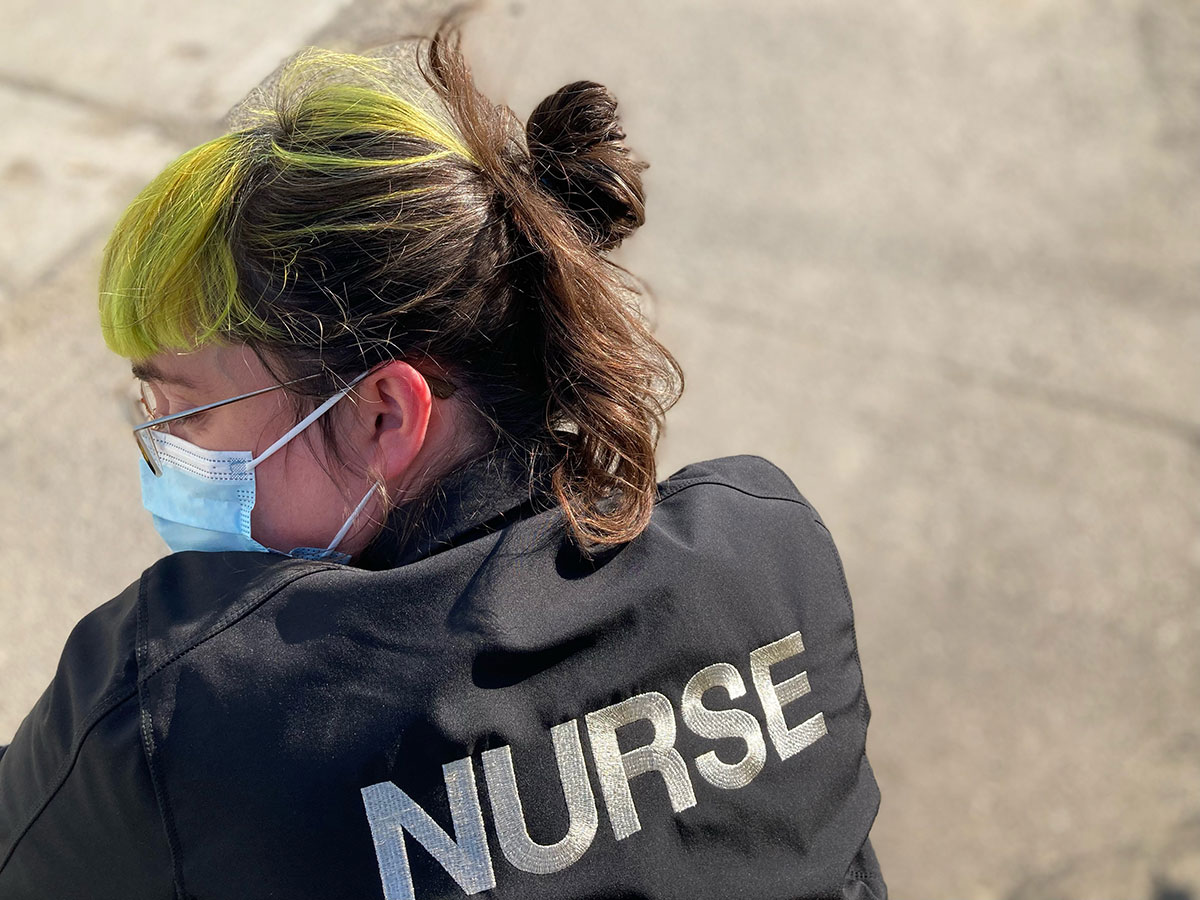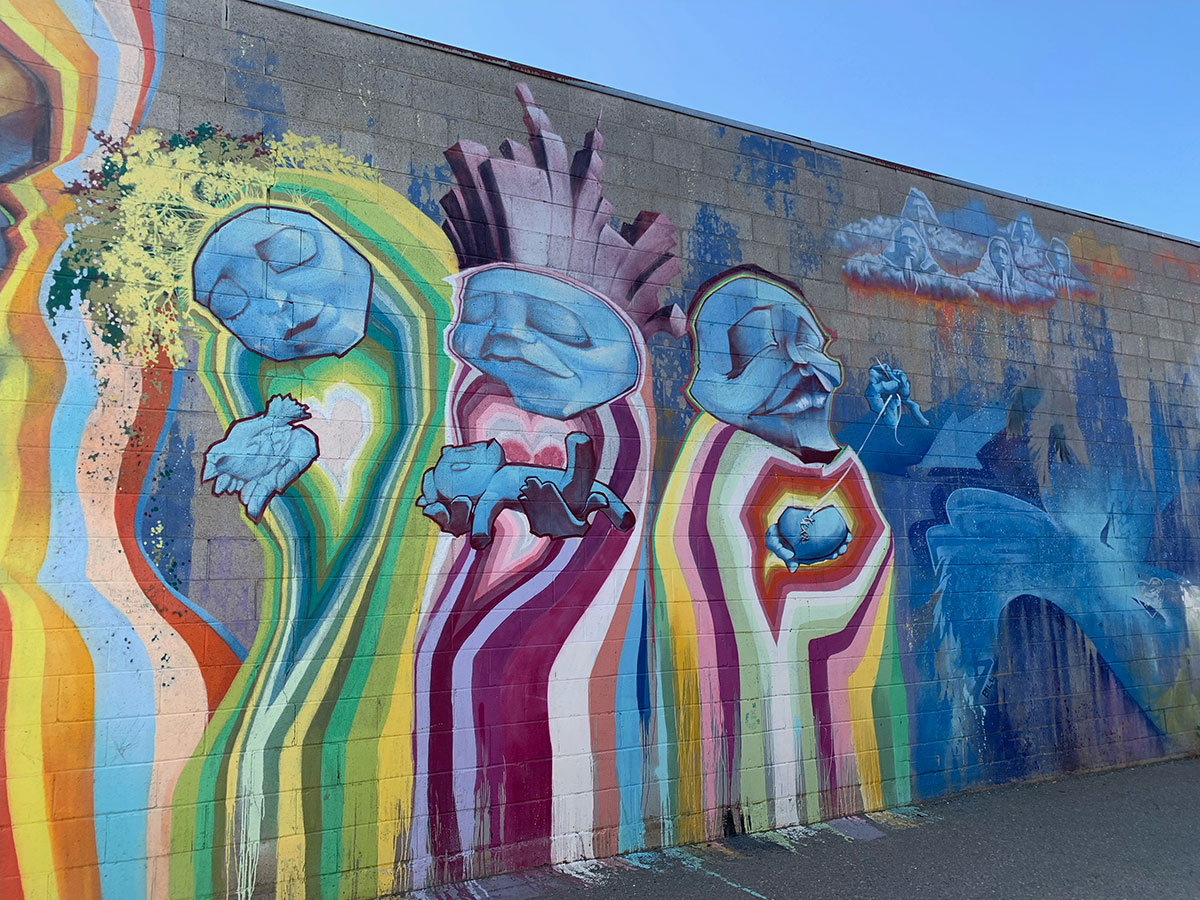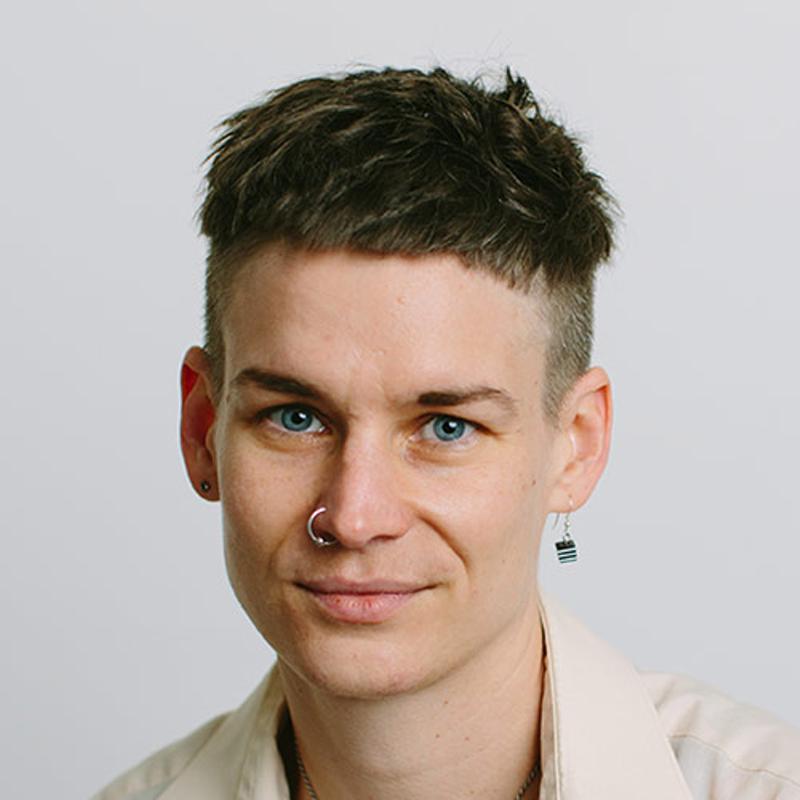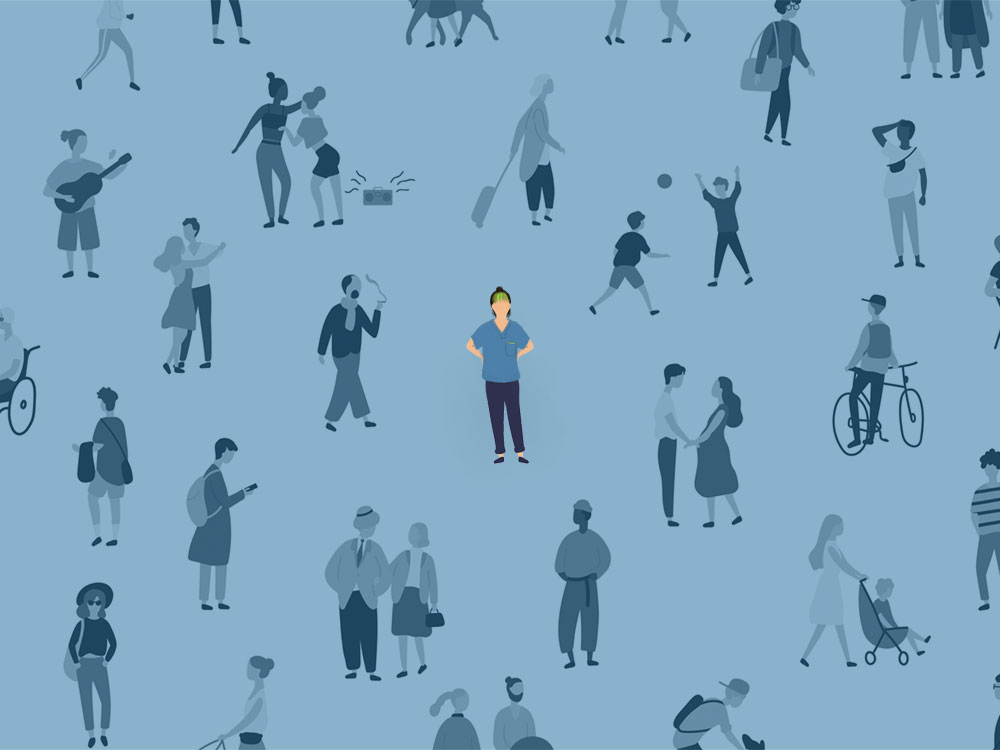“We’re the last Costco this far north,” says Torie Beram.
In other words, while it may seem like a small town to residents in the Lower Mainland, Prince George serves as a major hub in northern B.C.
Beram and I go a ways back. A decade ago, when I moved out East to go to school, I passed my apartment over to her; she lived there until she polished off her undergrad at the University of Victoria. From there she moved back north to Prince George, where she grew up, to train to be a nurse.
Today she’s working in downtown PG on the territory of the Lheidli T'enneh people, going to city council meetings and advocating for change in the city. Working for a small non-profit organization, she helps her clients confront health-care barriers by easing access to their needs. She was one of the first RNs in the province to prescribe medication to manage drug use, including Suboxone, methadone and Kadian.
This interview has been edited for length and clarity.
How would you describe your job?
I’m a registered nurse. I work in community health and harm reduction in downtown Prince George, and the sort of mission of the organization is to serve people at the street level, with a definite recognition that the majority of the people in the neighbourhood that we serve are Indigenous. We’re basically a super low-barrier clinic that primarily serves street-level folks.
How would you define harm reduction?
At its most basic, anything that reduces potential harm. There's the bike helmet analogy: a bike helmet is harm reduction. But the way most people have learned to understand harm reduction is through programs like needle exchange and sexual health.
What does it mean in practice to you?
It’s a very individual thing. A lot of people have this assumption that it means the same thing to every person. That there's a sort of trajectory that people need to follow. If we're talking about people who use substances, that it's going to turn into a life free of drugs. That’s an incorrect assumption.
All that harm reduction means is that you’re reducing the harm associated with whatever the behaviour or activity is. For people who use drugs, it can be anything from making sure you always have sterile equipment, to going to your doctor and getting set up with medications that help you so you're not using as much. It looks different for everybody. What one person ends at is just another step on somebody else’s path. Not everybody's going to have the same goal.
It's adaptive to what the person needs and how they want to experience harm reduction in their own life, which might also be intersectional in some ways.
Totally. It’s really important to know that it can mean whatever a person needs — for them specifically.
What shape does your average day take?
I live really close to where I work, so sometimes I bike, sometimes I walk, sometimes I drive. I get there at 8:30, I leave at 4:30. I have scheduled appointments, but people don't show up, and I can see more people than my schedule says. I'll get a phone call halfway through something and rearrange my whole day. I really love that I have a little bit of structure, but that anything can happen.
I try to keep spots open. So if someone comes in and they're like, “I need to see a nurse,” there will be a same-day slot for them to just pop into.
Are there specific clients that recognize you as their practitioner and come to you? Or is it just whatever nurse is in that day?
Right now there's two of us [RNs] at the clinic. We also have doctors and nurse practitioners. So there's always rotating providers that cycle through. There are clients I see regularly. We’re one tiny clinic, and there's not enough people, ever. Our providers are booking like two weeks out.
I'll see a lot of people, but my scope is definitely limited compared to a nurse practitioner or a doctor. So it's kind of my job determining, Is this person going to be OK just with the care that I can give them? Or do I need to pass this off to somebody else?
We’re like a one-stop health shop. There’s a variety of people's needs that can be met.
What's an example of something that you can help with, where you wouldn't forward them to somebody else, like a GP?
A classic example that I see all the time is someone comes to me and their methadone prescription has run out. I can quickly do an assessment and figure out what dose they were on, what dose they need to be on and what that's going to look like. I work really closely with our providers, so they trust my assessment, and I help get that prescription for those clients.
Usually I'll chat with them about what's going on. Talk to them about what their goals are, what their substance use is. We run clinics a few times a week where we're just doing that for clients. Because we have a lot of people who are on OAT medications — opioid agonist therapy, so methadone and Kadian, which is a slow-release oral morphine, or Suboxone.
I do a lot of wound care. There are common wounds that people who use drugs will get. So I've gotten pretty good at knowing when you need antibiotics versus when you just want to keep an eye. Then if someone has an abscess that needs to be drained, I’ll get them to come back day after day to make sure it's healing properly. And I recently became STI-certified, so I can do sexually transmitted infection assessments and treatment for clients.
How would you say that your job compares to other people working in harm reduction?
I feel like I'm kind of this in-between person in the health-care system. I work really closely with people in town running harm reduction activism groups, or non-profits that are serving the same community but in a different way; running overdose prevention sites. They’re real no barrier.
Where I work at the clinic I consider low barrier. You have to be a client to access full services. When people get to me, I'm within the health-care system, which is super inaccessible to a lot of people. So I try to see how I can be most effective in making that system a little easier to navigate. I really want people to feel like they're being listened to, and that they're being heard.

What does somebody need to do to be a client at your clinic?
We have an intake process, and kind of an internal triage system based on the information they give us: their housing situation, health, health history, immediate needs, whether or not they're in crisis. Then we'll set them up for an intake with one of our providers, and attend that first meeting.
We've had to pause that because we don't have enough doctors or nurse practitioners. There’s so many people that need our service and we're just not big enough.
It's a matter of capacity.
Yeah, it's a capacity thing. But I think our clinic serves over 1,500 people. We see a lot of people.
How do you feel working in harm reduction or serving people in Prince George compares to other places in the province, like Vancouver?
Harm reduction seems to always be coming from bigger centres. So the pace is kind of set by places like Toronto or Vancouver, and then we have to tailor it to work with our community. The North is a huge, huge area that is extremely spread out. And it's already resource-limited in a lot of ways, not just in terms of harm reduction, but health care in general. Access is a real challenge.
Prince George isn't a tiny little town, but everybody knows everybody. So there's this privacy thing, too. It's a real challenge to get your needs met in the North. It’s a specific challenge that we all have to think about.
When you talk about things like opiate agonist therapy, are there accessibility issues or limitations as far as being part of the Northern Health region?
Finding providers who are comfortable providing this care [here] is really challenging. That’s something that definitely has this trickle-down effect of clients not being able to get their needs met. There's been a lot of work going into trying to expand those services.
Connecting people who use drugs across the province has been really interesting in terms of how this service provision can be tailored to fit in the North. There's a lot of conversations happening, not just between people who are making the policy, or doctors who are serving communities that are similar, but the people who are getting the care and living this life. It’s really important that their voices are heard. I truly believe that my clients are the experts when it comes to them.
Do you think people in general have a good sense of what you do for a living? What would people who aren't familiar with your job find surprising, or have incorrect assumptions about?
I think people sort of assume is that it's all really hard and really difficult. And it is sometimes, but the majority of the time, it's just a really busy place. And there's so many funny things that happen through the course of a day. There's a lot of really lovely things that happen. Of course there's difficult stuff. But I have a really good time doing this work.
I have a particular set of skills, I provide a specific service. This work is 100 per cent in line with my values in my personal politics and my philosophy. And I love that I get to work with like-minded people who think about the same things. We get angry about the same stuff and we all are very passionate about what we do. But it’s still a job.
It sounds like you have a very practical and pragmatic approach. What would you say are the most joyful or meaningful things that you experience at work?
To have somebody come to you with a need, and you can meet that need. Even if it's just like, “I need some band aids,” “I need a snack.” It gets more complicated or complex, but being the last person that they need to talk to is, really — it’s super satisfying.
To be able to celebrate with our clients. When they meet a goal that they've set for themselves. Like they got a job and they're really excited about that, or they have been able to establish visits with their kid again. We've been able to get people set up with housing recently. It’s really exciting when you can be like, Here's a key, here's your place, you live here now. You're connected to these people's lives. So you see their triumphs, and you see their goals before they get to them.
In our education we're taught that we need to keep a distance between our clients and ourselves. But when you're doing community health, and you're seeing the same people day-in and day-out — you can't not feel for them, you can't not be affected by them. And this past year or two has been really, really hard because we've lost an awful lot of people. And those are folks we have relationships with.
A lot of what you've said is sort of a testament to the greater public health system in general, when people talk about the value of having a family doctor versus going to like a walk-in clinic, and how that sort of relationship over time really develops the quality of care that you have with a practitioner.
Exactly. When your provider knows you, we've got your baseline. So if something's off, sometimes we can notice. In that way, everybody's kind of looking out. The health-care system is a really scary place for a lot of people. I feel really good when through the course of our encounter, I can see a shift happen, and I know they can be at ease a little bit more.

You work in an Indigenous context. With Indigenous racism in health care, we’re seeing a wider exposure the past year or two, policy reports, it's getting talked about more. It sounds like people come to you when they feel uncomfortable going elsewhere and you're assuring them that it's a comfortable and safe space to access care. Are there any other ways that you feel that you’re challenging barriers to health care access?
We’re kind of a teaching clinic, we have a lot of learners that will come through our building. When I'm working with nursing students in particular, it's a really valuable thing to point out to them. Like how far someone will go to not go to the hospital, or to not go to a place where they don't feel safe.
It's been illuminated more lately with the In Plain Sight report. And a lot of attention is being paid across the country to just how bad it can be for Indigenous clients seeking care. And that's something that I think about every day.
I hope it's getting better. But I still have clients every single day that leave the hospital, or won’t go there in the first place and will come to us instead. We have to be able to meet their needs as best we can with what we've got. We have to be really creative in our approaches sometimes.
I'm a white settler, a non-Indigenous person. But it's really great to work in a place where the other nurse is Indigenous. We have some Elders on staff, we have some Indigenous providers. To have that built into the care that we provide.
Our Elder leads us in a letting go ceremony every year which is so helpful. Because the volume of people that we see is so big, that sometimes you don't even have time to process. You have to get to work and do your day and go, go, go. I think that's something that is lacking in other areas in health care — this understanding that those of us doing this work need a place to be able to sit for a minute. It’s really special to come together and really think about all of the people that we lost that year, to have a moment to let go and to recognize, because like I said before, you can't not be affected by this.
You don't really see this kind of stuff in our education. There are definitely efforts being made to include more about harm reduction, what it means to be a person who uses drugs, or to be someone who doesn't have a home. The clinic that I work at has been around for years, and it emerged out of a need that wasn't being met. The more people understand what the lives are like of the clients and community that I serve, the better. And that's how things change gradually.
How has the COVID pandemic changed the way that you work?
I started working at the clinic the fall prior to COVID. So I’d been there for almost half a year. Immediately as a clinic we had meetings because we all recognized: What is this going to mean for our community?
The overdose crisis got so much worse because of COVID. Even having a place [to use] the bathroom. Every challenge that my community already faced was turned up. Are we going to stay open? Yeah, obviously. Are we going to do COVID testing? That was very quickly established as a necessity, that was absolutely 100 per cent a service that we needed to provide.
It was not hard to see that our clients have a really difficult time accessing testing elsewhere. There was a central testing location, but you had to call in to make an appointment. And go there and wait in your car. So it's assuming you have a phone, it's assuming you have a vehicle, it's assuming you have a space to isolate. All these assumptions we couldn't work with.
Because we're a smaller organization, we were able to be really nimble in our response. And so I started COVID testing people in March 2020 and I didn't stop, really.
We were also responding to a lot more overdoses in the neighbourhood. The toxic drug crisis still shows few signs of slowing, the numbers keep going up. This region leads in overdose deaths per capita in the province which is pretty scary with the lack of access to health services in general.
In January 2021, the province opened up prescribing to include registered nurses in terms of certain OAT medications, and I became one of the first to do that training, which was a big privilege for me, to have that expanded scope. It absolutely wouldn't have happened as quickly if COVID didn't happen — RN prescribing was huge. It’s one more thing that I can do, one more person that can get their needs met.
What are the most challenging aspects of your job? Is there anything you wish that people could better understand about what you do?
When this work is hard, it feels like nobody else cares. And it feels like it's me and my team chipping away at this massive legacy of colonization and bad policy and racism and poverty and just every big systemic issue. And that's when it can feel so overwhelming. It can feel really isolating. Working against systems in place. That's tough.
And then of course, probably the hardest thing is the death and the loss and the sadness. And it doesn't always affect you the same way. It can build up because we are trained to do this work. So it'll catch you off guard sometimes.
It’s an intense place. It's intensely happy, but it's also intensely sad sometimes. But it’s so satisfying to do this work. I absolutely wouldn't be doing it if it didn't fulfil me. ![]()
Read more: Health, Rights + Justice, Labour + Industry


















Tyee Commenting Guidelines
Comments that violate guidelines risk being deleted, and violations may result in a temporary or permanent user ban. Maintain the spirit of good conversation to stay in the discussion.
*Please note The Tyee is not a forum for spreading misinformation about COVID-19, denying its existence or minimizing its risk to public health.
Do:
Do not: